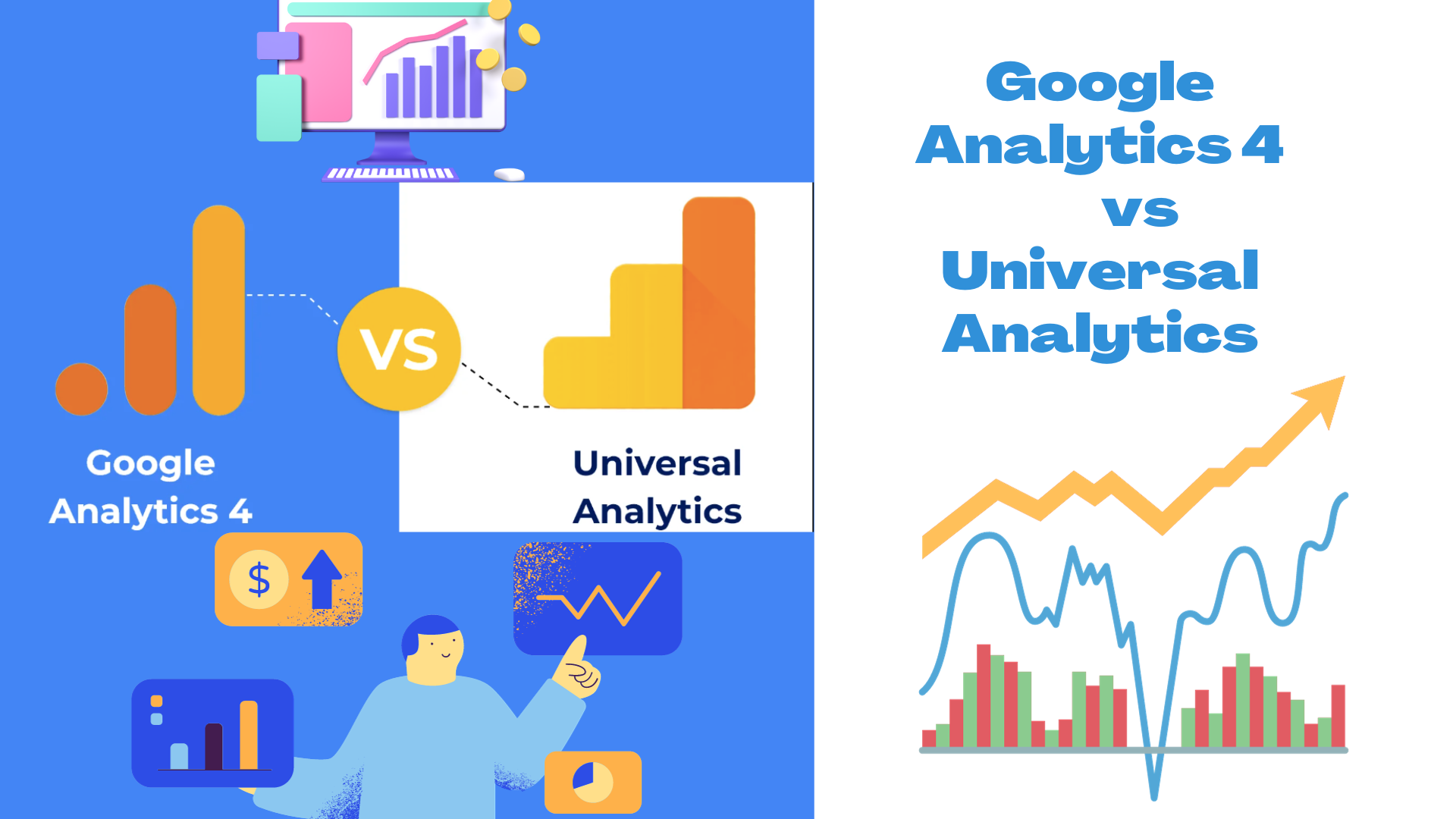The curtain has fallen fall on an era. Universal Analytics (UA), the long-reigning champion of website and app tracking, has gracefully bowed out on July 1, 2023. Enter Google Analytics 4 (GA4), its future-proof successor, poised to revolutionize the way we measure digital interactions.
But navigating this analytical crossroads can be daunting. Which platform reigns supreme? Is a clean break from UA inevitable?
Data Measurement Models: Session Snapshots vs. Event Tapestry:
At its core, the fundamental distinction lies in data measurement. UA operates on a session-based model, meticulously capturing website visits as discrete episodes. This works well for traditional, page-centric experiences, providing familiar metrics like pageviews and bounces. However, the rise of cross-platform journeys and multi-touchpoint engagements exposes UA's limitations. Enter GA4, wielding the power of an event-based model. Every user interaction, from scrolling down a page to signing up for a newsletter, is meticulously recorded as a discrete event. This flexibility shines in the age of omnipresent apps and interwoven digital experiences, painting a rich tapestry of user behavior across platforms and devices (citation: Google Analytics 4 vs. Universal Analytics, Google Support).
Privacy: From Crumbling Cookies to First-Party Fortresses:
As third-party cookies crumble under the weight of privacy concerns, UA's data architecture faces an existential threat. GA4, however, rises from the ashes as a champion of privacy. Built with first-party data and machine learning at its core, GA4 offers cookie-less measurement and user-centric insights. This not only aligns with evolving regulations like GDPR and CCPA but also empowers you to understand your audience without compromising their privacy (citation: The Future of Privacy in Web Analytics, Google Blog).
User Journey Mapping: Connecting the Dots in a Fragmented Landscape:
UA excels at tracking users within individual sessions, providing detailed snapshots of their website visits. However, it stumbles when attempting to connect the dots across sessions and devices. GA4, on the other hand, boasts cross-domain tracking and rich user IDs, weaving a seamless narrative of user journeys even as they bounce between platforms and devices. This holistic view empowers you to identify conversion bottlenecks, personalize experiences, and optimize marketing campaigns across the entire digital touchpoint spectrum (citation: Understanding Cross-Domain Tracking in Google Analytics 4, Google Support).
Reporting and Analysis: From Pre-Packaged Menus to Bespoke Buffets:
UA offers familiar, pre-defined reports, serving up easily digestible morsels of website metrics like pageviews and sessions. While convenient, this buffet of pre-packaged options can restrict your analytical appetite. GA4, on the other hand, lays out a smorgasbord of possibilities. Customizable dashboards and powerful analysis tools enable you to craft bespoke reports tailored to your specific business goals and user interactions. This newfound analytical freedom lets you explore user behavior in granular detail, uncovering hidden patterns and actionable insights (citation: Exploring Explorations in Google Analytics 4, Google Analytics).
Future-Proofing: Embracing Evolution vs. Clinging to the Past:
UA, a veteran of the analytics scene, remains frozen in time. No new features or updates will grace its codebase, rendering it increasingly obsolete in the face of rapidly evolving digital landscapes. GA4, on the other hand, is a living, breathing platform, constantly evolving with regular updates and enhancements. By choosing GA4, you embrace the future of analytics, ensuring your data strategy remains nimble and adaptable in the face of ever-changing technologies and user behaviors (citation: Introducing the New Google Analytics, Google Blog).
The Verdict: A Nuanced Landscape, Not a Binary Battle:
While GA4's capabilities are undeniable, labelling it the unambiguous victor would be a disservice to the complexity of the situation. Here's a reality check:
- For established businesses heavily reliant on UA: A gradual migration to GA4, leveraging UA data until it was unavailable was the prudent path.
- For startups and businesses with flexible tracking needs: GA4's privacy-focused design and advanced analysis capabilities have made it a compelling primary tool.
Remember, this transition isn't just about technical implementation; it's about adopting a user-centric, privacy-first approach to data. This requires shifting your mindset, embracing ongoing learning, and actively engaging with the GA4 community.
Join the discussion, share your experiences, and demystify the Great Analytics Shift together!
January 9, 2024





